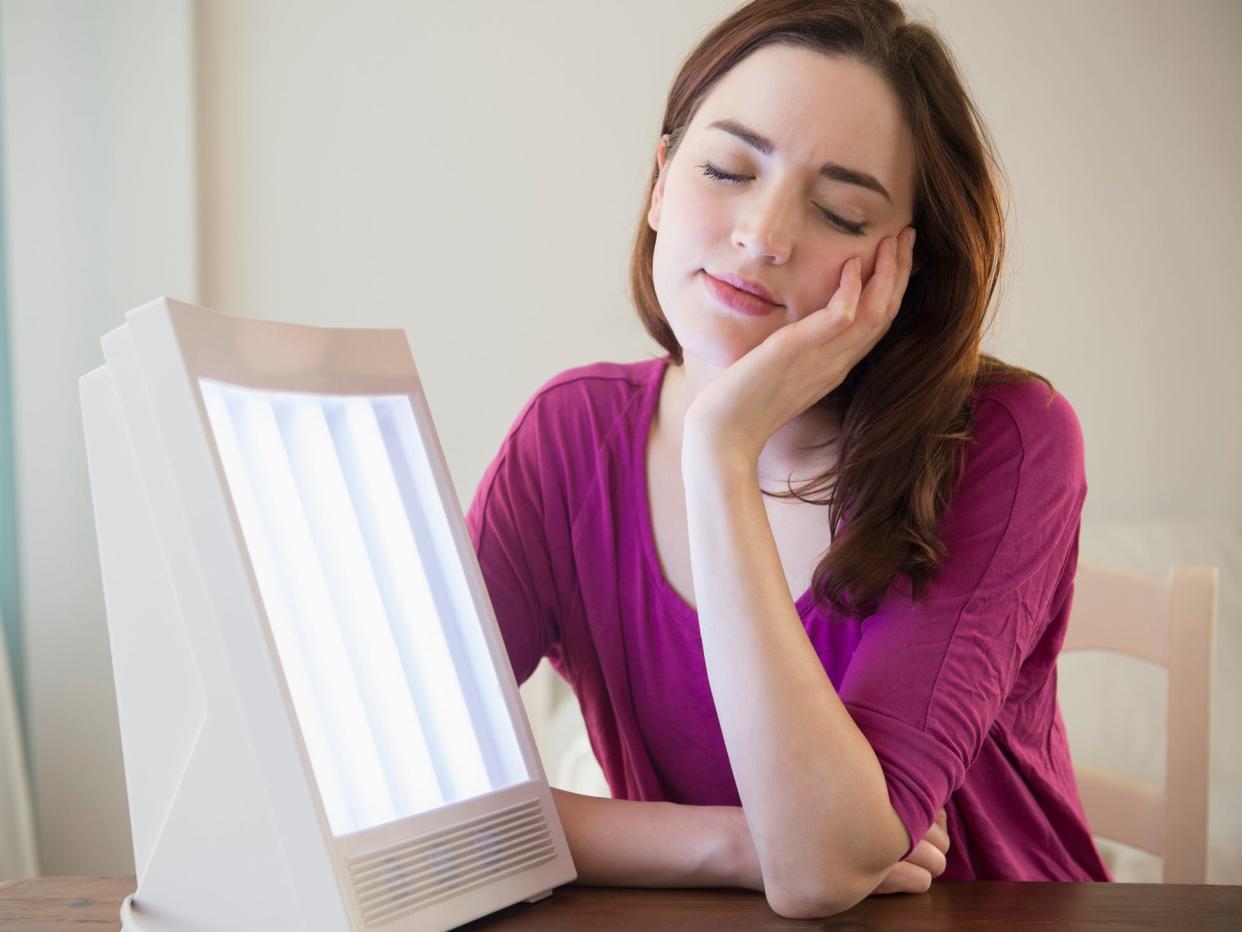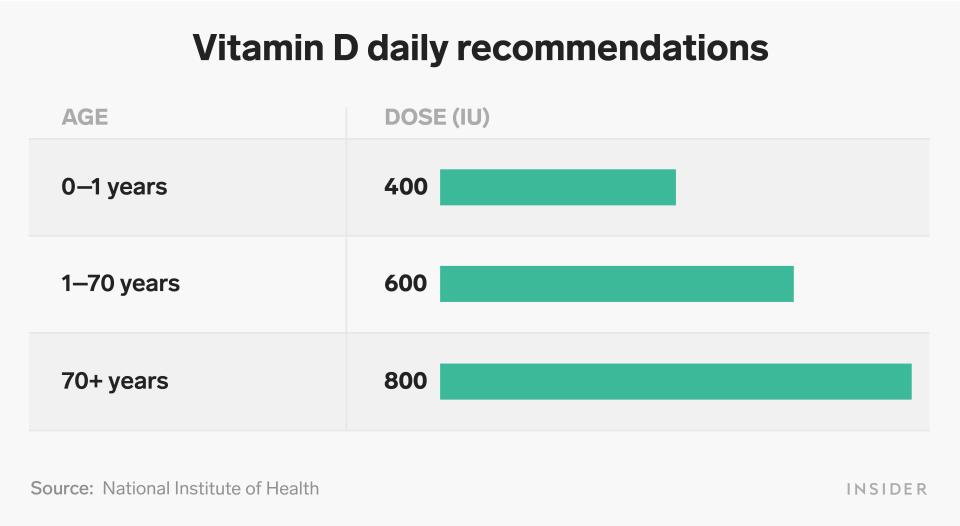What is vitamin D deficiency? How less sun can make you vulnerable to infection

The primary cause of vitamin D deficiency is lack of sunlight exposure.
Vitamin D helps keep your immune system strong, so a deficiency could be the reason for frequent colds or the flu.
You can get more vitamin D by spending at least 5 to 10 minutes outside 3 times a week without sunscreen.
This article was medically reviewed by Melissa Rifkin, MS, RD, CDN, owner of Melissa Rifkin Nutrition LLC.
Vitamin D is an essential vitamin that helps your body absorb calcium — one of the main building blocks of bones. It also plays a role in nerve and muscle health as well as boosting your immune system.
Your body produces vitamin D naturally when it's exposed to sunlight, which is why vitamin D is sometimes nicknamed the "sunshine vitamin." Few foods contain vitamin D, making sunlight the main source for most people worldwide.
But when sunlight isn't regularly available, like during winter months or at higher latitudes, vitamin D deficiency can strike. In fact, an estimated 40% of US adults don't get enough of the sunshine vitamin. This article can help you determine if you have a vitamin D deficiency and how to treat it.
Symptoms of vitamin D deficiency
Common symptoms of vitamin D deficiency include:
Back pain
Bone pain
Muscle weakness
Frequent colds or respiratory infections
Severe deficiency can cause osteomalacia and osteoporosis, conditions where bones become less dense and more likely to fracture or break, says Kelly Springer, a registered dietitian.
Springer also notes that vitamin D has links to depression, but adds that there is still more research needed before doctors recommend vitamin D supplements to treat depression.
Causes of vitamin D deficiency
You can become vitamin D deficient for several reasons:
Lack of sunlight exposure as the body naturally produces vitamin D when exposed to the sun.
Not eating enough vitamin D-rich foods
Being unable to absorb or metabolize vitamin D due to a medical condition like celiac disease, Crohn's disease, and cystic fibrosis.
Risk factors
Research has shown that some people are at a higher risk of developing a vitamin D deficiency than others. Some risk factors to becoming deficient are:
Skin tone
People with darker skin tones are more likely to be at risk of a vitamin D deficiency because they contain more of a pigment called melanin, which reduces the skin's ability to absorb UV radiation from the sun. While this better protects darker-skinned people from sunburns, it also means they don't produce as much vitamin D when exposed to the sun.
Conversely, light-skin people, especially those with a family history of skin cancer, may actively choose to avoid the sun to protect their skin from damage. Without enough sun exposure, they too are at risk of a vitamin D deficiency.
Age
Aging adults are at greater risk of vitamin D deficiency for several reasons:
The skin doesn't produce as much vitamin D when exposed to sunlight
More time spend indoors leads to less vitamin D from sunlight
Lack of appetite leads to less vitamin D from food sources
The body has a harder time absorbing vitamin D
Infants who are fed breast milk are also at a greater risk as breast milk does not provide adequate amounts of vitamin D. Therefore, infants who are breastfed or partially breastfed should also be given a daily supplement of 400 IU of vitamin D.
While rare, severe vitamin D deficiency can lead to rickets, a condition that causes delayed growth, muscle weakness, and skeletal deformities in children and infants.
Dietary restrictions
Very small amounts of vitamin D can be found in plants, making those who follow vegan or vegetarian diets more likely to be deficient.
Lactose intolerance and gluten-free diets have also been linked to lower levels of vitamin D. This is because very few non-dairy and gluten-free products have been fortified with vitamin D.
Obesity
People who are obese are more likely to have low vitamin D levels because it is a fat-soluble vitamin, meaning it gathers in excess fat tissue. This makes it harder for the body to use it.
Weight loss surgery also increases one's chances of becoming deficient because it alters the digestive tract, making it more difficult for the body to absorb and synthesize nutrients.
Medical conditions
People with Crohn's disease, celiac disease, kidney or liver problems, or cystic fibrosis struggle to absorb nutrients including vitamin D.
Geographical factors
People living in the Northern Hemisphere may not get enough vitamin D from sunlight in the winter. Those who stay indoors due to their job may also not get adequate sun exposure.
How much vitamin D do I need?
The average adult needs around 600 international units (IU) of vitamin D a day. For reference, a serving of salmon contains roughly 400 IU.
The recommended dosage is different across age groups. The chart below shows the daily intake needed to maintain bone health:

Yuqing Liu/Insider
How to treat Vitamin D deficiency
You can up your vitamin D intake in three ways:
Getting more exposure to sunlight
Through your diet
Through nutritional supplements
Unlike other nutrients, vitamin D is produced by the body naturally when the skin is exposed to the ultraviolet rays from the sun. Depending on where you call home, you should try to get at least 15 minutes of sunlight between peak intensity hours from 10 a.m. and 3 p.m., three times a week, in order to get enough vitamin D.
In addition to sunlight, you can obtain vitamin D through foods like salmon, mushrooms, and eggs. But because there are relatively few foods that contain adequate amounts of vitamin D, some everyday staple items like milk and cereal are fortified with vitamin D.
Vitamin D supplements are another way to ensure you're getting your daily dose. Supplements can be advantageous for all healthy adults, but especially for those who struggle to get adequate amounts via dietary intake or exposure to sunlight due to skin sensitivity.
Mayo Clinic says that most adults can safely take 1,000 to 2,000 IU per day from supplements.
You can also boost your vitamin D using a UV lamp, much like the type used for indoor tanning. This is particularly helpful for people with certain medical conditions, like kidney or liver diseases, who can't absorb vitamin D from supplements.
Takeaways
Even though the human body is able to produce vitamin D through exposure to sunlight, up to 40% of Americans are still deficient in this crucial vitamin. Symptoms of vitamin D deficiency include back pain, bone pain, and muscle weakness.
If you think you have a vitamin D deficiency talk to your doctor. They may suggest getting more sunlight, eating more foods with vitamin D, or taking a supplement.
Related stories from Health Reference:
What is resistant starch and why it's healthier than simple starch
What the different types of carbs are and how they can affect your health
Does intermittent fasting work? Research doesn't have a definite answer for its long-term effects
Read the original article on Insider


